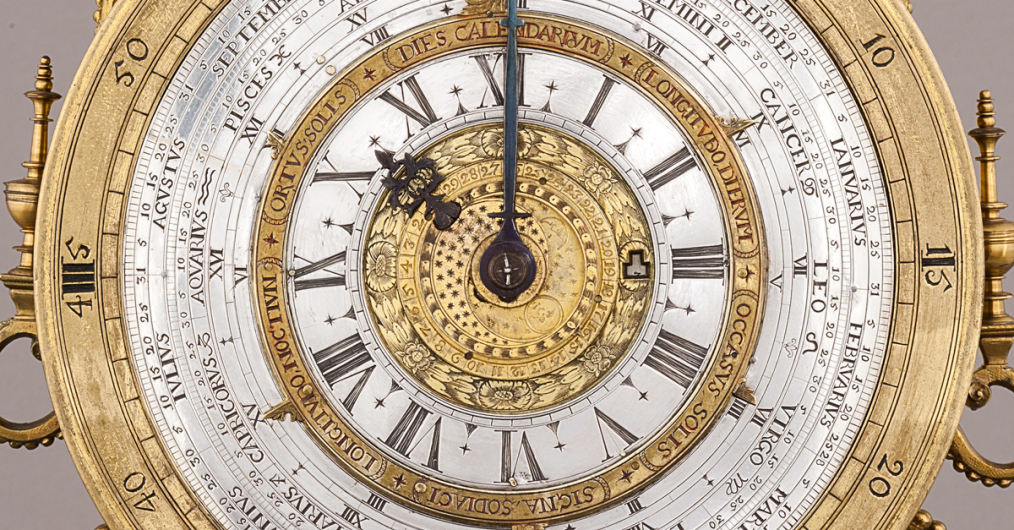Wawel tickets official site: bilety.wawel.krakow.pl
Clocks
This valuable, albeit small, collection could make a significant contribution to research into the history of
clock-making.
clock-making.
Among the clocks in Wawel there are innovative items, both in form and ornamentation, and in the construction of mechanisms, assembled in leading clock-making centres.
Portable clocks from the end of the 16th c and the 17th c. are of particular importance. They were made in the Polish Republic, in Gdańsk, Toruń, Vilnius and Lublin, and also in France and Germanic countries. Among them there are numerous tile clocks with a horizontal mechanism, encased in beautifully decorated,
polygonal boxes, extremely popular for two centuries, until the late 18th c., and several tower clocks, copying the architectural structure of church towers. The Wawel collection also includes rarer artistic creations with complicated cases for clock mechanisms, resulting from the artist’s creativity and the client’s
taste. This group includes a monstrance clock and an urn or vase-shaped clock.
The 18th and 19th c. are represented by more varied timepieces. The castle collection boasts round travel clocks, with protective cases, also known as carriage clocks, as well as an English long-case clock, with a mechanism which moves the figures of dancers, French clocks, or cartels, pendulum clocks, on the hanging
console, in cases decorated with marquetry or coloured horn plates, Dutch and English grandfather clocks, or various mantel clocks, frequently with allegorical figural composition, popular in the 18th and 19th c.
There is also a small collection of pocket watches, mainly from Antoine Patek’s Swiss workshop, collected because of the decoration appealing to patriotic feelings about Polish history.
Portable clocks from the end of the 16th c and the 17th c. are of particular importance. They were made in the Polish Republic, in Gdańsk, Toruń, Vilnius and Lublin, and also in France and Germanic countries. Among them there are numerous tile clocks with a horizontal mechanism, encased in beautifully decorated,
polygonal boxes, extremely popular for two centuries, until the late 18th c., and several tower clocks, copying the architectural structure of church towers. The Wawel collection also includes rarer artistic creations with complicated cases for clock mechanisms, resulting from the artist’s creativity and the client’s
taste. This group includes a monstrance clock and an urn or vase-shaped clock.
The 18th and 19th c. are represented by more varied timepieces. The castle collection boasts round travel clocks, with protective cases, also known as carriage clocks, as well as an English long-case clock, with a mechanism which moves the figures of dancers, French clocks, or cartels, pendulum clocks, on the hanging
console, in cases decorated with marquetry or coloured horn plates, Dutch and English grandfather clocks, or various mantel clocks, frequently with allegorical figural composition, popular in the 18th and 19th c.
There is also a small collection of pocket watches, mainly from Antoine Patek’s Swiss workshop, collected because of the decoration appealing to patriotic feelings about Polish history.
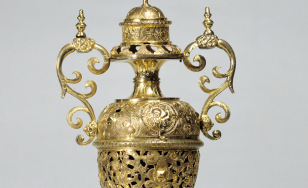 Vase-shaped table clock. Germany, Augsburg, David Fronmiller (1546–c. 1618), late 16th century
Vase-shaped table clock. Germany, Augsburg, David Fronmiller (1546–c. 1618), late 16th century
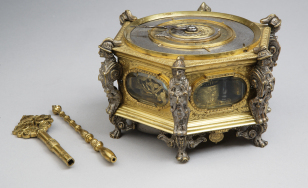 Table clock. Poland, Gdańsk, Simon Ginter (recorded in Gdańsk as of 1650), after 1650
Table clock. Poland, Gdańsk, Simon Ginter (recorded in Gdańsk as of 1650), after 1650
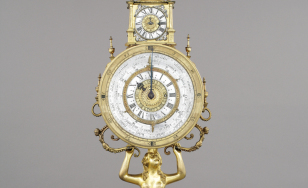 Astronomical monstrance clock. Poland, Toruń, Lorentz Wolbrecht (recorded in Toruń 1662–1684), third quarter of the 17th century
Astronomical monstrance clock. Poland, Toruń, Lorentz Wolbrecht (recorded in Toruń 1662–1684), third quarter of the 17th century
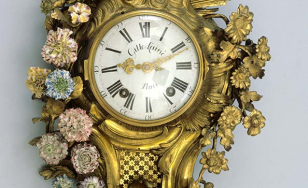 Cartel clock, France, Paris, Gille Pierre I François, called Gille L’Aîné (c. 1690–1765), 1746–1749
Cartel clock, France, Paris, Gille Pierre I François, called Gille L’Aîné (c. 1690–1765), 1746–1749
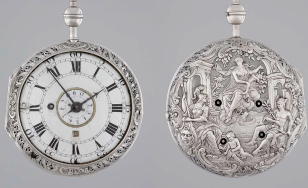 Coach clock. Germany, Friedberg, Sebastian Bauman (1729–1805), case by Friedrich Christian Langpaur (sig. FCL), 1760–1790
Coach clock. Germany, Friedberg, Sebastian Bauman (1729–1805), case by Friedrich Christian Langpaur (sig. FCL), 1760–1790
LOG IN
REGISTRATION
